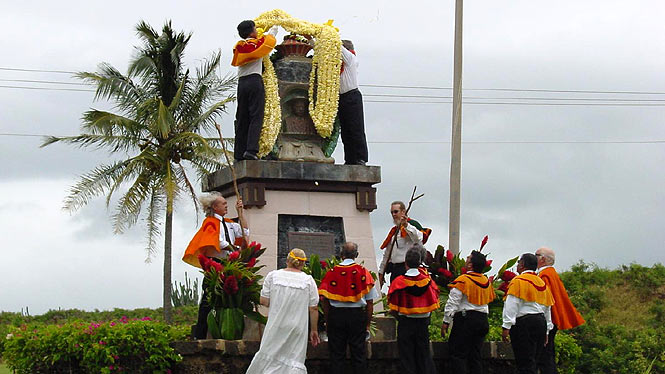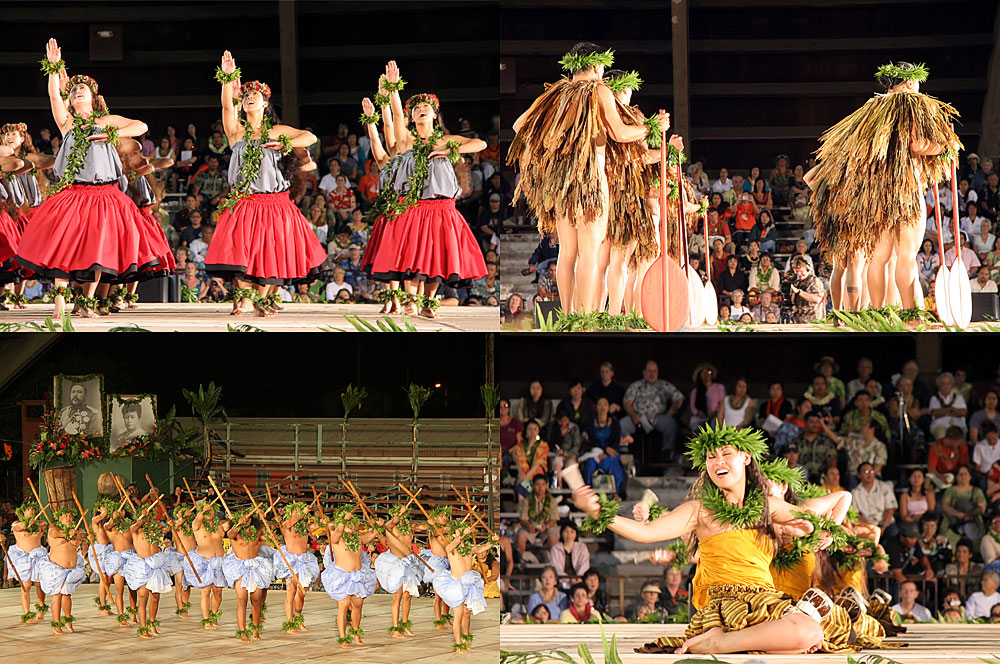Aloha mai kākou!
In honor of today, I'm here to introduce some Hawaiian holidays! I'll start off with today's holiday:
King Kamehameha I Day
Celebrated annually on June 11th, it is commonly known as Kamehameha Day. This day commemorates the unification of the Hawaiian Islands under one rule after Kamehameha the Great conquered the islands (Kauaʻi aside, but they settled for a treaty). It was first declared a holiday in 1871 by King Kamehameha V to honor his grandfather. It is also the only royally declared holiday that is still observed; it is also one of the first holidays that was acknowledged by the government upon statehood. Traditionally, this day was celebrated with fairs, carnivals, running, and horse and cycle races. These days, holiday celebrations include a floral parade through Honolulu followed by a Hoʻolauleʻa, parties, horse riding competitions, and the King Kamehameha Hula Competition. On this day, people also drape leis over the statues of Kamehameha the Great. As it is a state holiday, most schools and state offices close as well as some businesses.
Here's a news article published today by KHON2 News regarding today's celebrations.


Prince Jonah Kūhiō Kalanianaʻole Day
Celebrated annually on March 26, it is commonly referred to as Prince Kūhiō Day. This holiday is one of only two holidays in the United States dedicated to royalty, the other being Kamehameha Day. This day commemorates the birth of Prince Kūhiō and the passage of the Hawaiian Homelands Act as well as functions as a remembrance of his life and efforts to improve the lives of Native Hawaiians. Because it is a state holiday, many schools and city and state workers are off. Celebrations for this holiday can vary in duration from month-long celebrations to week-long celebrations; this all includes parades and festivals that show Hawaiʻi's cultural customs and traditions. Prince Kūhiō festivals may have statewide canoe races, cultural demonstrations, and luaus. On this day, people may also drape leis over his statue or attend special services at Oahu’s Royal Mausoleum, which is where Prince Kūhiō is buried.
Fun Fact: During Prince Kūhiō celebrations, health organizations are actively involved in festivals to raise awareness about various issues.


Statehood Day
Formerly known as Admission Day (I didn't even realize it wasn't called this anymore as everyone still calls it by this name.), it was established in 1969 and is held annually on every third Friday in August. It is meant to commemorate the day Hawaiʻi gained statehood. There are very few celebrations for this day aside from small messages or articles in the newspaper to wish Hawaiʻi "happy birthday." Some locals describe it as a silent holiday, which has raised discussion on whether or not this holiday should be removed or celebrated on a larger scale. This day can also be quite controversial, and independence activists have held protests on this day.

Merrie Monarch Festival
Held annually in spring from Easter Sunday morning to Saturday evening, it is a week-long cultural festival that takes place in Hilo, Hawaiʻi. It honors King David Kalākaua, Hawaiʻi's Merrie Monarch, and his patronage of the arts. He is credited for the restoration of many Hawaiian traditional arts during his reign, one of which is hula. The festival is split in two parts: non-competitive events and competitive events. The first four days are composed of non-competitive performances by both local and international hālau at various venues, an arts and crafts fair, and an art exhibit. The final non-competitive event, the Merrie Monarch Parade, is held on Saturday morning.

The competitive events are the hula competitions and is considered the most prestigious hula contest. The competition is broken up into sections: Miss Aloha Hula (solo), where performers incorporate both modern and traditional forms of hula; group kahiko (kāne [male] division and wahine [female] division, which is composed of ancient hula; and group 'auana (kāne division and wahine division), which is composed of modern hula. Preforms are given seven minutes and are judged in every aspect from kaʻi (entrance), oli (chant), hula (dance) and mele (song), to hoʻi (exit).

As always, if you have questions or would like to discuss, please let me know!
Mahalo nui loa!
Edit (6/12/2015): I forgot to talk about Mahahiki Fest, which basically commemorates the Makahiki season (ancient Hawaiian New Year, a time of peace and cultivation, so war was kapu during this season) and honors the god Lono. This season spans for about four lunar months and is celebrated with things like hula, games, and sports. Many of the games and sports were actually designed to keep the men battle ready, so when the season ended, they would still be prepared to fight.
Fun Fact: When Captain Cook arrived to the Hawaiian Islands, it was Makahiki season, which is why he was given such a warm reception. However, there was tension between the islands that had previously been at war. When Cook left and came back, Makahiki season had finished, and the islands were preparing for war again. His untimely arrival resulted in his death.


*None of these photos belong to me.
